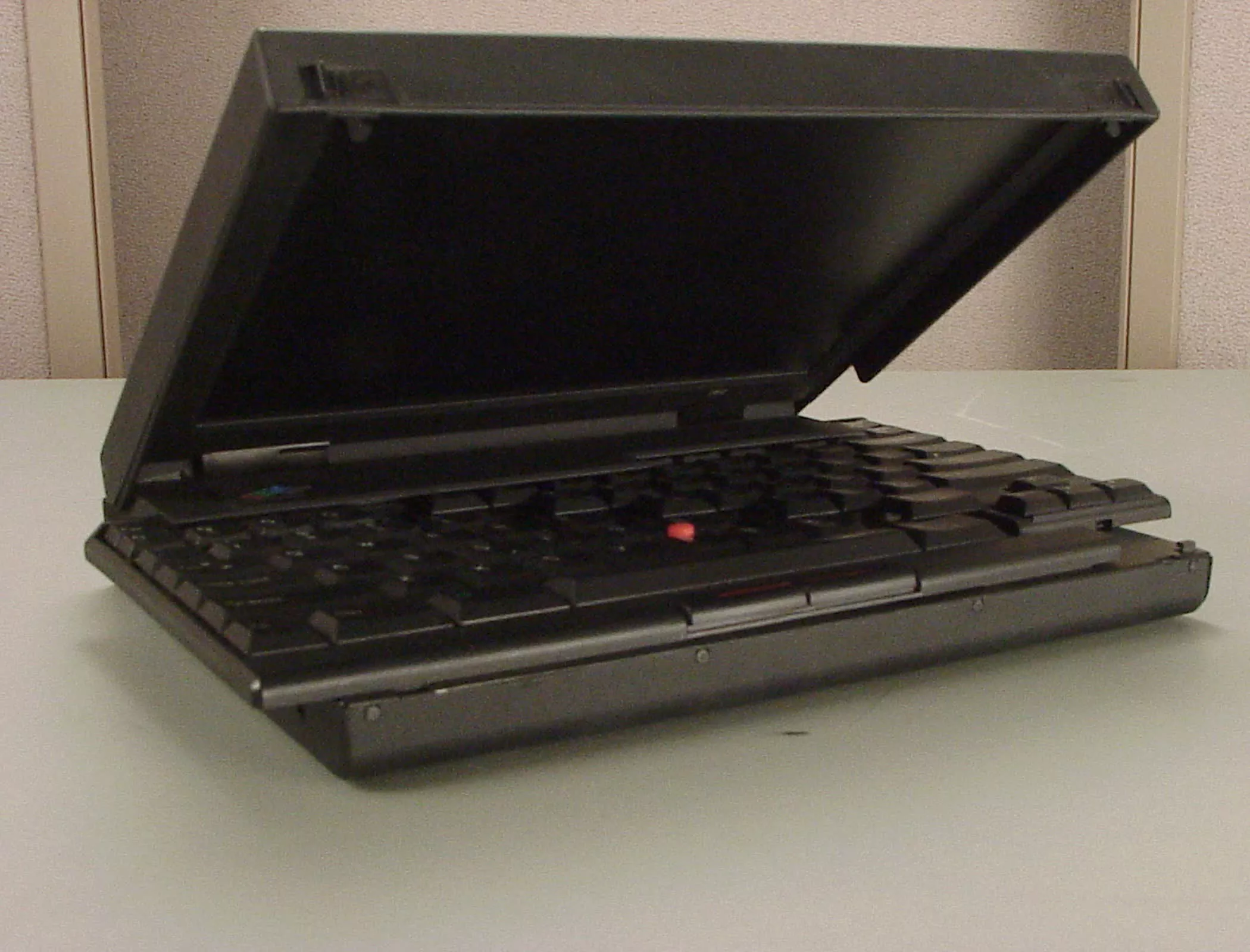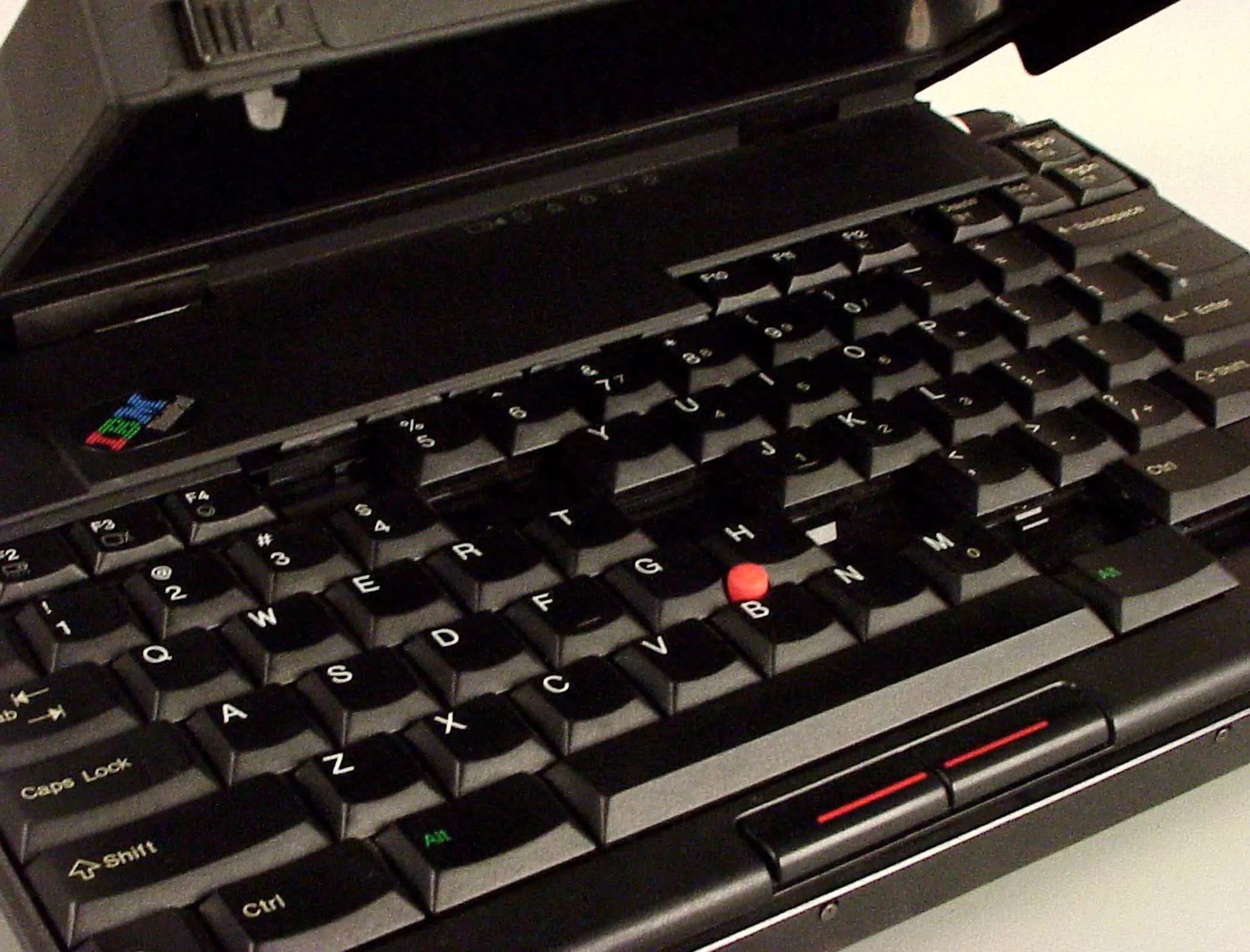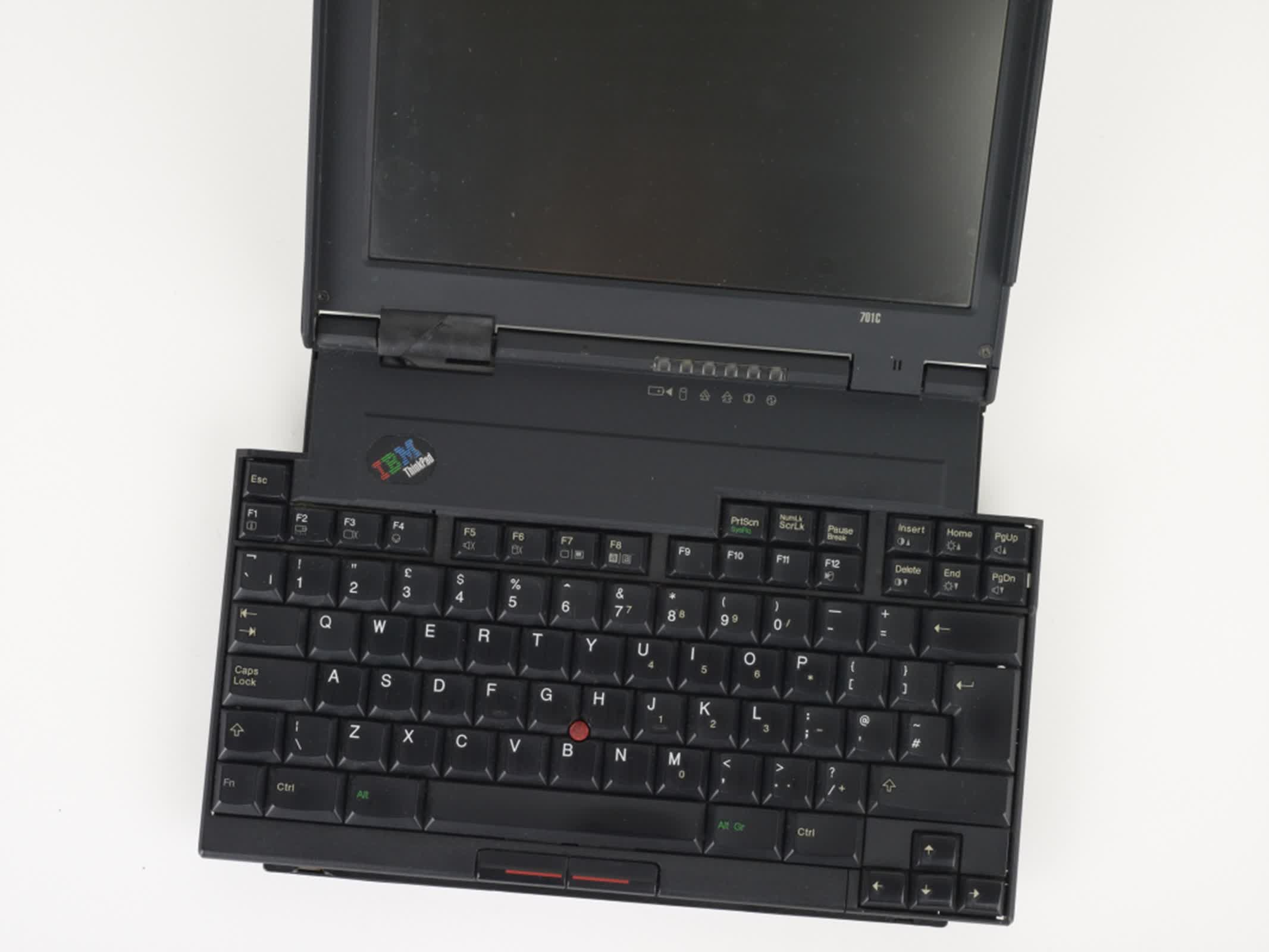Through the looking glass: In early 1995, IBM sent shockwaves through the laptop industry with the introduction of the ThinkPad 701, a device that appeared to be just another unassuming black rectangle at first glance. But opening the lid revealed a technological marvel unlike anything else of its time: the so-called "Butterfly" keyboard, a feat of mechanical engineering that briefly redefined portable computing.

Nearly 30 years later, global technology editor Harry McCracken revisited this icon for Fast Company's "1995 Week," offering a deep look not just at the laptop's impact, but at the combination of ambition, design, and evolving technological needs that brought it to life – and just as quickly, to an end. His article immerses readers in that history, reconstructing the context that made the ThinkPad 701 a cult legend.
On the surface, the ThinkPad 701 conformed to the design norms of its day. With its matte-black "cigar box" aesthetic, it was more compact than most competitors but made no claims to thinness, measuring nearly the height of four stacked modern ultrabooks at its thickest point. Much of that bulk was devoted to now-obsolete components: a dial-up modem, PCMCIA slots, and an infrared port.

Yet the outer shell told only half the story. Lifting the screen activated a coordinated ballet of gears and levers concealed inside the base. As the display rose, the TrackWrite keyboard executed a precise, synchronized motion: two interlocking segments slid laterally and then downward, expanding beyond the edge of the laptop's case to form a full-width, seamless typing surface.
This allowed a subnotebook-sized machine, barely under 10 inches wide, to offer an 11.5-inch keyboard – conveying the feel and comfort of a desktop. For anyone using a laptop in the mid-1990s, it was nothing short of a revelation.
At the heart of the Butterfly keyboard's development was a challenge that had long plagued subnotebooks. These machines aimed to appeal to on-the-go professionals, but shrinking a laptop's footprint almost always meant cramped, uncomfortable keyboards. For manufacturers constrained by the size of screens and bezels, delivering a full-size typing experience seemed out of reach.
Richard Sapper, the industrial designer behind the ThinkPad's iconic look, began exploring potential solutions soon after the first models were introduced. John Karidis, a gifted IBM mechanical engineer, ultimately had the epiphany that changed everything. Inspired while playing with building blocks with his daughter, Karidis realized that by splitting the keyboard into two triangular sections that could slide past each other, its width could be dynamically adjusted without the complexity or bulk of folding designs.
Early prototypes reportedly involved cardboard cutouts and mocked-up mechanisms, but the core principle remained: let the keyboard expand as the lid opens, and contract as it closes – all through a linked cam mechanism on the hinge.
IBM set out to transform Karidis's invention, eventually codenamed "Butterfly," into a production-ready system. Classic ThinkPad elements, such as the squared-off chassis and red TrackPoint nub, remained, but now anchored a completely new mechanical innovation.

Engineering teams spent years ensuring the expansion mechanism was both durable and foolproof, even tasking robots to stress-test the keyboard through tens of thousands of open-close cycles.
Unfortunately, while the ThinkPad 701 was originally slated for an earlier release, delays meant it shipped with Intel's aging 486 processor just as the industry was pivoting to Pentium chips, a miscalculation that would hamper its long-term competitiveness.
Released with fanfare in March 1995 and priced between $1,499 and $3,299, the ThinkPad 701 earned immediate acclaim. Its ingenious keyboard design, paired with a then-impressive 10.4-inch display and striking aesthetics, captivated reviewers and customers alike. During its brief time on the market, it became the best-selling laptop of the year, racking up 27 design awards and even earning a place in the Museum of Modern Art's permanent collection.
The Butterfly keyboard also captured pop culture attention, making cameo appearances in blockbuster films like GoldenEye and Mission: Impossible, where it symbolized cutting-edge technology at a time when laptops rarely held the spotlight. For many, simply watching the keyboard's smooth transformation evoked both awe and delight.
Yet the ThinkPad 701's triumph was short-lived. By the end of 1995, less than a year after its debut, IBM withdrew the model from the market. Part of this stemmed from the rapid evolution of laptop design: as screens grew larger and bezels shrank, manufacturers could fit full-size keyboards into compact bodies without the need for mechanical expansion.
Moreover, the Butterfly keyboard, ingenious as it was, came with its own drawbacks: concerns about long-term reliability, the vulnerability of its overhanging segments, and the inherent limitations of its mechanical complexity.
More fundamentally, as the pace of innovation accelerated, the market moved beyond solutions designed for yesterday's constraints. IBM's own next-generation models, such as the ThinkPad 560, reflected the new paradigm – thin, light, and spacious, with no need for mechanical tricks. By then, the Butterfly keyboard stood as an elegant answer to a question no longer being asked.
Why the ThinkPad 701 became a cult legend in computer history